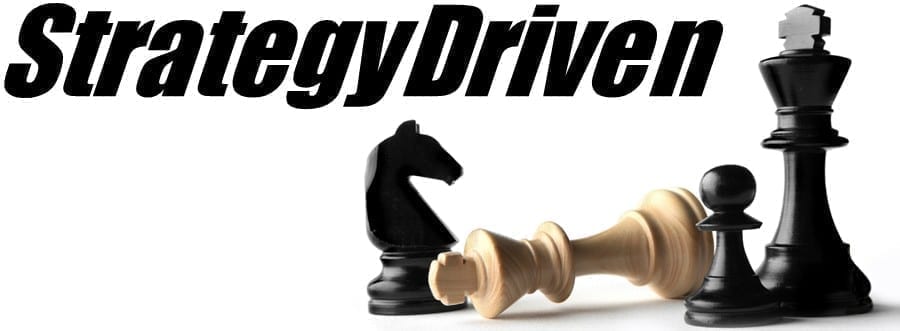The Art of Business Innovation: Crafting Strategic Alternatives
In the fast-paced world of business, innovation has become a critical factor in achieving success and staying ahead of the competition. In this article, we will explore the art of business innovation and the importance of crafting strategic alternatives to drive growth and thrive in today’s ever-evolving market. Join us as we delve into the creative process of inventing new ideas and implementing strategic solutions to propel your business forward.
Understanding the Foundations of Business Innovation
One key aspect of business innovation is the ability to think outside the box and come up with strategic alternatives. This involves looking at the current state of the business, identifying areas for improvement or new opportunities, and then crafting innovative solutions to address them. By taking a creative approach to problem-solving, businesses can stay ahead of the competition and continue to grow and evolve.
Innovation in business is not just about coming up with new ideas, but also about executing them effectively. This requires careful planning and a deep understanding of the market, the competition, and the internal capabilities of the business. By considering a variety of strategic alternatives and weighing the potential risks and rewards of each, businesses can make informed decisions that drive growth and success. Being able to adapt and pivot when necessary is also crucial in today’s rapidly changing business landscape. Embracing a culture of innovation can help businesses stay agile and thrive in an ever-evolving market.
Exploring Different Models for Generating Strategic Alternatives
In the world of business innovation, the ability to craft strategic alternatives is paramount to success. By exploring different models for generating these alternatives, companies can stay ahead of the competition and adapt to changing market conditions. One popular approach is the Blue Ocean Strategy, which focuses on creating uncontested market space by offering unique value propositions.
Another model worth considering is the SWOT analysis, which helps businesses identify their Strengths, Weaknesses, Opportunities, and Threats. By analyzing these factors, companies can develop strategic alternatives that leverage their strengths and capitalize on external opportunities while mitigating weaknesses and threats. Ultimately, the art of crafting strategic alternatives lies in creativity, critical thinking, and a willingness to think outside the box.
Implementing a Comprehensive Approach to Innovation in Decision Making
In today’s fast-paced business world, innovation is a key driver of success. To truly excel in decision-making processes, companies must adopt a comprehensive approach to innovation that encompasses both creative thinking and strategic planning. By crafting strategic alternatives, businesses can explore a range of innovative solutions to challenges and opportunities, ultimately leading to more informed and effective decisions.
One way to implement a comprehensive approach to innovation in decision making is to foster a culture of creativity and experimentation within the organization. Encouraging employees to think outside the box, take risks, and explore new ideas can lead to breakthrough innovations that have the potential to transform the business. Additionally, leveraging technology and data analytics can help identify emerging trends and market opportunities, enabling businesses to stay ahead of the competition and make data-driven decisions that drive growth and success.
Leveraging Technology and Data Analysis to Drive Innovation in Business Operations
Utilizing technology and data analysis in business operations is more than just a trend – it’s a strategic imperative. By harnessing the power of analytics, organizations can uncover valuable insights that drive innovation and create a competitive edge in the market. Through the careful crafting of strategic alternatives, companies can optimize their processes, enhance customer experiences, and ultimately achieve sustainable growth.
One key element of leveraging technology and data analysis is the ability to adapt and evolve in a rapidly changing business landscape. By staying ahead of trends and understanding market dynamics, businesses can identify new opportunities for expansion and diversification. With the right tools and methodologies in place, companies can pivot quickly, capitalize on emerging trends, and position themselves for long-term success.
Final Thoughts…
As we’ve explored the intricacies of the art of business innovation and the importance of crafting strategic alternatives, it is evident that creativity and strategic thinking are key ingredients for success in today’s competitive market. By constantly pushing the boundaries and exploring new possibilities, businesses can stay ahead of the curve and thrive in an ever-evolving landscape. So, whether you’re a seasoned entrepreneur or just starting out on your business journey, remember to embrace innovation and think outside the box to unlock new opportunities and drive growth. Innovation is not just a tool, but a mindset that can propel your business to new heights. So, go forth and innovate, and watch as your business transforms and adapts to the ever-changing world around us. The possibilities are endless, so dare to be different and make your mark in the world of business innovation.




 Dr. Katrin Muff (
Dr. Katrin Muff ( It’s hard to find an executive who doesn’t believe that his or her people are significant assets and a competitive advantage for the company. Why then are so few employees involved in the strategic planning process? Engaging employees gains their ‘rubber meets the road’ customer and process experiences and earns buy-in it for the plan’s implementation. Therefore, employee involvement in strategic planning is a win-win proposition; the only question remaining is when and where in the process to involve them.
It’s hard to find an executive who doesn’t believe that his or her people are significant assets and a competitive advantage for the company. Why then are so few employees involved in the strategic planning process? Engaging employees gains their ‘rubber meets the road’ customer and process experiences and earns buy-in it for the plan’s implementation. Therefore, employee involvement in strategic planning is a win-win proposition; the only question remaining is when and where in the process to involve them. StrategyDriven Enterprises, LLC
StrategyDriven Enterprises, LLC Sharon Drew Morgen is founder of Morgen Facilitations, Inc. (
Sharon Drew Morgen is founder of Morgen Facilitations, Inc. (